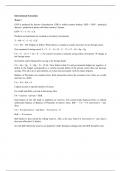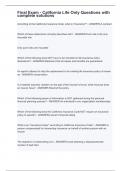Summary
Summary of International Economics Exam Summary (Grade: 8)
- Course
- Institution
Short, highly adequate and complete exam summary at International Economics Radboud University. This summary contains the fundamental material for the subject, summarized in a compact way. If you know these 10 pages, you can answer any question in the exam. No words are wasted on nonsense. It's als...
[Show more]




